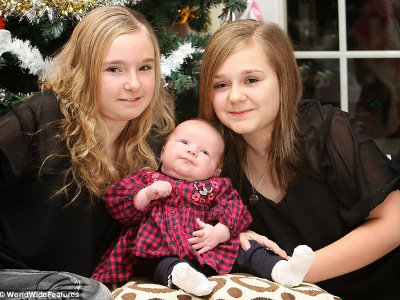Couple who had been trying unsuccessfully for 18 years conceived with the help of AI

A couple who had been trying to conceive for 18 years without success, and had visited fertility treatment centers around the world, have found that they have conceived their first child with the help of AI. AI was used to find functioning sperm in the azoospermia husband.
A couple tried for 18 years to get pregnant. AI made it happen | CNN
A couple was treated at Columbia University Fertility Center after 18 years of failure to conceive, as the husband had azoospermia. The vast majority of men with azoospermia feel completely healthy and normal, have no sexual dysfunction, and their semen appears normal, but when viewed under a microscope, only cell debris and fragments are visible in the semen, which normally contains hundreds of millions of sperm.
The new approach the couple tried was a method called STAR (Sperm Track and Recovery) , which uses AI to detect sperm.
The STAR method uses a microscope equipped with a high-speed camera and high-resolution imaging technology. A man's semen sample is placed on a specially designed chip under the microscope, which takes over eight million images in under an hour and uses specially trained AI to identify the sperm, allowing them to be immediately separated into small droplets of culture medium and collected.
In this case, three hidden sperm were found and retrieved, and fertilization was successful after IVF. This is the first time that this couple has successfully conceived using the STAR method.
'After so many disappointments we had kept our hopes to a minimum. It took me two days to believe I was really pregnant. I still wake up in the morning and can't believe it's real. I still can't believe I'm pregnant until I see the scan,' his wife said.

Dr. Zev Williams, director of the Columbia University Reproductive Medicine Center, and his team spent five years developing the STAR method. With the STAR method, they were able to find 44 sperm in an hour from a semen sample that had taken two days of highly skilled technicians to find no sperm. Dr. Williams said he felt it was a game changer for medicine.
Until now, the only treatment for azoospermia has been surgery to extract sperm directly from the patient's testicles. This involves removing part of the testicles, dividing them into small pieces, and searching for sperm from them. However, this can only be done a few times and is painful, as it can cause permanent scarring and damage to the testicles. Other treatments include administering hormones, and receiving sperm from a donor if other treatments are unsuccessful.
Dr. Williams believes that the STAR method could be a new option and would like to publish the research findings related to the STAR method to share with other fertility centers. At the time of writing, the STAR method is only available at Columbia University Fertility Center and costs less than $3,000.

This isn't the first time AI has been used to help men with azoospermia. A team of researchers at the University of British Columbia is also developing an AI model that automates the process of finding sperm. 'AI is very well suited to this because it relies on learning,' says Dr. Severn Hero, a professor at the university. 'It can learn from images of what sperm look like, what their shape is, what characteristics they should have, and then it can find what it's looking for.'
'The STAR technique was developed as a team effort,' said Dr. Williams. 'What drove and motivated us all was the hope that we could help couples who previously didn't have the chance to conceive.'
Related Posts:
in Software, Posted by log1p_kr







